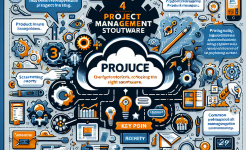Concept Stage
The concept stage is the starting point of Huawei's IPD process. It is here that the initial ideas for a new product are generated and explored. This involves a comprehensive market analysis to identify unmet customer needs, emerging trends, and potential opportunities. Huawei's teams conduct in-depth research, gathering data from various sources such as customer surveys, industry reports, and competitor analysis. By understanding the market landscape, they can formulate product concepts that have the potential to stand out.
In addition to market research, internal brainstorming sessions also play a vital role. Cross-functional teams, including engineers, marketers, and designers, come together to share their perspectives and expertise. This diverse input helps in creating a wide range of product concepts. These concepts are then evaluated based on various criteria such as technical feasibility, market potential, and alignment with the company's strategic goals. The most promising concepts are selected for further development.
Moreover, during this stage, Huawei also focuses on defining the product's key features and benefits. This is not just about listing the technical specifications but also about understanding how the product will solve the customer's problems and provide value. By clearly defining these aspects early on, the company can ensure that all subsequent development efforts are centered around meeting the customer's expectations.
Planning Stage
Once the concept is finalized, Huawei moves into the planning stage. This stage is all about creating a detailed roadmap for the product development. It involves setting clear goals and milestones, as well as allocating the necessary resources. The project team, which is now more formally established, works on defining the scope of the project, including what features will be included in the initial release and which ones may be reserved for future updates.
Resource allocation is a critical aspect of this stage. Huawei needs to ensure that it has the right mix of human resources, such as software engineers, hardware designers, and testers, as well as financial and material resources. This requires careful planning and coordination across different departments. The company also creates a project schedule, breaking down the development process into smaller, manageable tasks and assigning deadlines to each of them.
In addition, risk management is an integral part of the planning stage. The team identifies potential risks that could derail the project, such as technological challenges, changes in the market, or supply chain issues. For each risk, they develop mitigation strategies. This proactive approach to risk management helps Huawei to minimize the impact of unforeseen events and keep the project on track.

Development Stage
The development stage is where the actual product takes shape. Huawei's engineering teams start building the product based on the plans and specifications developed in the previous stages. This involves a high level of technical expertise and collaboration. For example, in the development of a smartphone, the hardware team works on designing the circuit boards, selecting the components, and ensuring the overall physical structure of the device.
At the same time, the software team is busy developing the operating system, applications, and user interface. They need to ensure that the software is not only functional but also user-friendly and compatible with the hardware. This requires constant communication and coordination between the two teams to resolve any integration issues that may arise.
Quality control is also a top priority during the development stage. Huawei has strict testing procedures in place to ensure that the product meets the highest standards. These tests include functional testing, performance testing, and reliability testing. Any bugs or issues that are identified are immediately addressed, and the development process is adjusted accordingly. This iterative approach to development helps in improving the product's quality and ensuring that it is ready for market release.
Launch and Lifecycle Management Stage
The final stage of Huawei's IPD process is the launch and lifecycle management stage. Once the product has been developed and tested, it is time to introduce it to the market. This involves a comprehensive marketing and sales strategy. Huawei needs to create awareness about the product, highlight its unique features and benefits, and target the right customer segments. The company uses various channels such as advertising, social media, and product launches to reach out to potential customers.
After the launch, the focus shifts to lifecycle management. This includes monitoring the product's performance in the market, gathering customer feedback, and making necessary improvements. Huawei keeps a close eye on customer reviews and complaints to identify areas where the product can be enhanced. Based on this feedback, the company may release software updates, add new features, or make hardware improvements.
Moreover, lifecycle management also involves managing the product's supply chain. Huawei needs to ensure that there is an adequate supply of the product to meet the market demand. At the same time, it also needs to manage the costs associated with production and distribution. By effectively managing the product's lifecycle, Huawei can maximize its product's market share and profitability.
In conclusion, Huawei's IPD product development process, with its four distinct stages, is a well-structured and comprehensive approach. The concept stage lays the foundation by generating and evaluating product ideas based on market needs. The planning stage creates a detailed roadmap and manages resources and risks. The development stage focuses on building the product with high quality. And the launch and lifecycle management stage ensures the product's success in the market and its continuous improvement. This process has enabled Huawei to develop innovative and competitive products that have won the trust and loyalty of customers around the world. It serves as a model for other companies in the technology industry and beyond, highlighting the importance of a systematic and customer-centric approach to product development. By following these stages, Huawei has been able to adapt to the rapidly changing market dynamics, stay ahead of the competition, and drive its growth and success in the global marketplace.
ARTICLE TITLE :Analysis of the four stages of Huawei's IPD product development process ,AUTHOR :ITpmlib

















